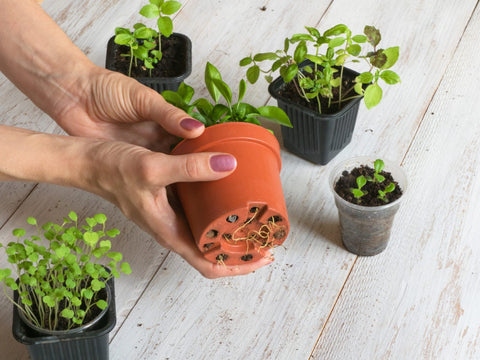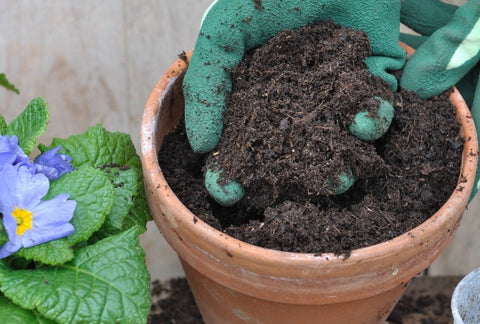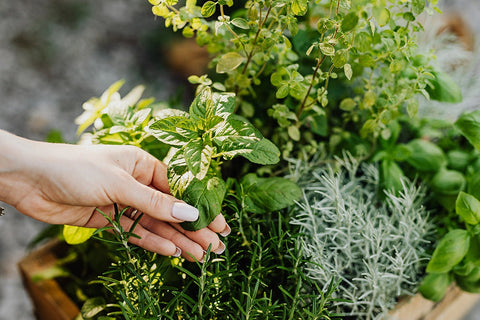So, you’ve started some seeds and you are looking to figure out just the right pot to use. Or, maybe, you’ve got some growing and want to find a forever home for your plants to grow to their full potential! Either way, you’ve come to the right place to guide you towards a decision.
There are tons of pot options, so we hope we can help you cut through the noise and let you know what features to look for. All in all – it’s pretty simple. First, the pot should have adequate drainage. Second, the pot needs to match the size of your plant. Additionally, different materials have certain advantages and disadvantages that we will summarize.
Drainage
The plant needs an opening in the bottom to let excess water out. Without this, the plant will get overwatered and can become very prone to root rot, fungus gnats, and mold.
Size
The size dictates what and how many plants can live happily in your pot. It can get a little confusing – especially if you are planting lots of different plants in the same pot. It’s helpful to remember that plants are pretty flexible, so it’s okay if your pot is close to the guidelines but not perfectly there. If you are in doubt regarding the size, it’s always okay to go a little bigger.

Plant types
Herbs
Most herbs are happy in smaller pots, so you can focus on picking out pots that work for your space. For growing indoors in your windowsill, we don’t recommend going smaller than 4” for most herbs. For the outdoors, where it tends to be warmer than indoors, you should use a 6” pot or larger. The table below has the number of plants and their minimum pot size. Still, we recommend bigger pots than the minimum requirement to allow for bigger harvests.

Vegetables:
Vegetables need more space, but can also be perfectly happy in containers. The table below is for our container-friendly veggies kit, which needs a bit less space than typical vegetables. If you use a nice big container you can do some companion planting, like our favorite – tomatoes and basil.

There are also lots of different materials you will see out there. They are all great options, but there are some nuances you might want to consider when making decisions about your pots.
Plastic
Pro – Plastics are common, inexpensive, lightweight, often have more drainage holes than other pots, and are safer around young children than other pots.
Con – If single-use, it comes with the ecological problems of using plastic. Typically, they do not last more than a few seasons. Over time, plastic pots can leach chemicals into the soil.
Wood
Pro- Biodegradable and eco-friendly, wooden pots also tend to be lightweight and easy to transport. Usually, wooden pots are aesthetically pleasing, especially in comparison to plastic pots.
Con – Since wooden pots are biodegradable, this also means they can rot over time if used outdoors and without proper maintenance. In addition, the timber used may not be from a sustainable resource. The pots need to be well-kempt.
Terracotta
Pro – They are usually quite aesthetically pleasing, and regulate temperature a bit. In addition, terracotta planters are porous and suitable for windy areas. Generally, they are fairly inexpensive.
Con – They are heavy, and need to be watered more frequently. Also, they are easily breakable and often have poor drainage.
Fabric
Pro – Fabric pots are inexpensive, have good aeration, and are biodegradable.
Con – Fabric planters require a lot of water usage and last for a few seasons, generally only 2-3.











